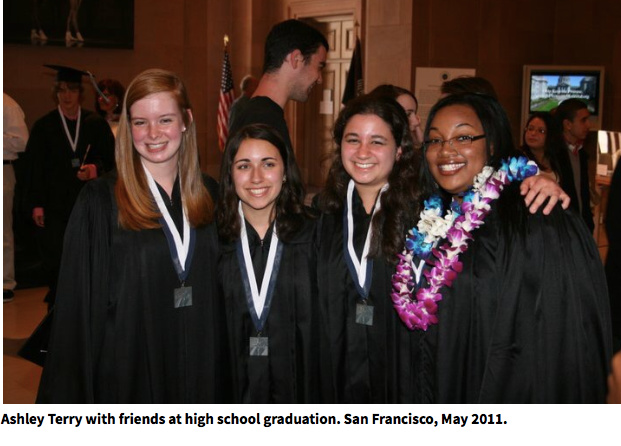The transition from middle to high school is challenging for most, if not all students. Mine wasn’t any different. I went to KIPP Bayview Academy, a charter school in San Francisco, where most students were black or brown. While middle school wasn’t easy, I had a solid group of friends and teachers who supported me in and out of the classroom. My parents were actively involved in the high school process, wanting the best education for me post-KIPP. So when the question of whether or not I was interested in going to a private high school came up, I knew it would set me up for success, but I didn’t know what it meant to be in and navigate that space as a young black girl.
I was hesitant to start at my new private high school. It was located in the Presidio, and it was a stark difference culturally to what I was used to at KIPP. It was a predominantly white school. I stood out like a sore thumb, and for the introvert that I am, it made it hard for me to find my place. I was sure that I didn’t belong and that this wasn’t the place I would stay for long. I called my dad after my first day of high school and told him that I wanted to transfer. He asked why and all I could muster up was that I don’t see myself fitting in here. Little did he know that I had yet to find another student to relate to or didn’t know how to double space my paper in humanities class or that I walked into the wrong physics class and was completely embarrassed. From the way I dressed to the way I spoke to how I looked, I knew that my belonging here wouldn’t come easy.
Embarrassment was the least of my concerns in my first year. I struggled with how to acclimate to an environment that, at that time, wasn’t prepared to support me as a student of color. There weren’t any affinity groups or clubs for me to join. I was the only black student in my grade, and that was the most isolating feeling for someone who just graduated middle school. I didn’t know what it would mean to navigate this high school, and no one prepared me for what I would endure for the next four years.
While I never fully acclimated to my high school, I made it my mission to have it acclimate to me. I made it my personal goal to connect with other students of color who shared my same experience. I was mindful that I didn’t want to lose the core of who I was, and I was open to figuring out who I could be in high school. So in addition to talking to other students, I also began to speak to a staff member who I trusted – the librarian. After building a close relationship with the librarian, a few other students of color and I started the Unity Club. Our mission was simple: to create a safe space for students of color to discuss what they were experiencing.
Among the many lessons I learned in high school, the one that feels most prevalent now is that your school environment is as much yours as it is anyone else’s. There will be traditions that make up who the school is, and there are ways in which a student can challenge school culture to include them. Schools are often open to expanding their identity, and many times that happens when students are encouraged to push back against the status quo.
Ashley Terry
Latest posts by Ashley Terry (see all)
- El Entorno de la Escuela es Suya: Cómo Hice el Transición de la Escuela Secundaria a la Escuela Preparatoria - November 1, 2019
- Your School Environment is Yours: How I Made the Transition from Middle to High School - October 30, 2019
- Lo que Estudiantes y Padres Deben Saber Sobre la Transición de la Escuela Preparatoria a la Universidad - May 23, 2019
- What Students and Parents Need to Know About the Transition from High School to College - May 16, 2019
- #EducadoresSiempreAprendiendo: Cómo AB 705 Ayuda a los Estudiantes a Evitar Cursos de Recuperación Redundantes - January 4, 2019

